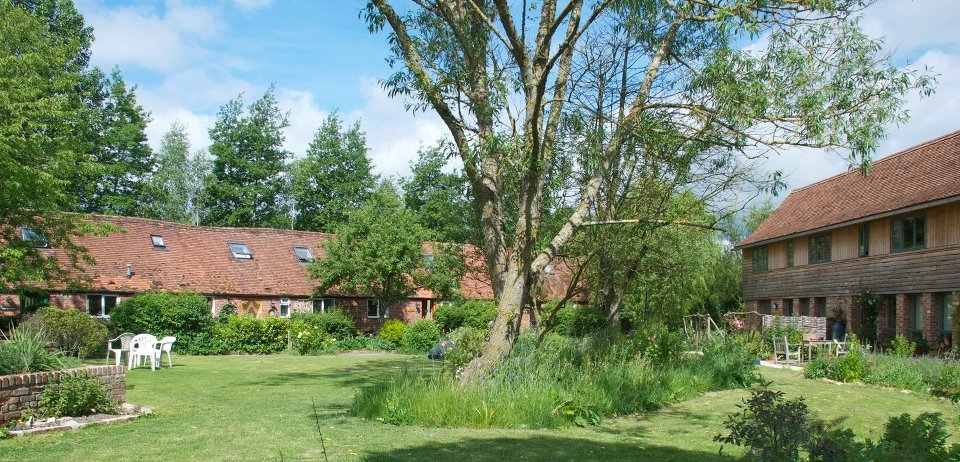A case history of the Threshold Centre
An ecological footprint is a measure of how much productive land area your lifestyle requires, and how far this is from sustainability. The UK average footprint is between 5 and 8 global hectares per person, based on different experts’ views. This is a story of how simple measures at the cohousing project I co-founded achieved a carbon footprint of only 2.4 hectares per person.

Cohousing is a brilliantly simple idea: combining self-contained dwelling units (anything from a one-room studio to a family home) with shared facilities, such as a large room for shared meals and social events, market garden, guest rooms, etc. Having lived at the Threshold Centre for five years, I can confirm that it’s potentially more sustainable, more sociable, and more fun.
In Britain, property economics and the planning system make it painfully slow and hard to build a cohousing scheme from scratch: so back in 2003, I had the idea of acquiring an existing property and converting it. In 2004, six of us bought an old farmhouse with outbuildings in North Dorset. Two barns had been converted into holiday cottages, and the farmhouse had space for a shared lounge, dining room, office and guest bedrooms.
We set up a non-profit Community Interest Company which owned the whole property, and we called our project The Threshold Centre. It was the first low-impact, affordable cohousing neighbourhood in the UK. Our sustainability plan addressed the three main sources of domestic carbon emissions:
- Food: we had a shared half-acre market garden, and group meals twice weekly reduced food waste
- Heating: our planning permission to create a total of 14 dwellings (half affordable, funded by a housing association) included an efficient biomass boiler using wood pellets to heat the whole site.
- Transport: our small community minimised private car use. We had social activities and play facilities on site, we shared cars for outings and shopping. Households were limited to one private car each, and had to insure it as a pool car. This made it easy for a low-income household to avoid the cost of car ownership.
Try imagining the situation we may all face in a few years’ time, when the cost of food and fuel could be much higher. You don’t need a dedicated cohousing project to do this: you could set up simple sharing arrangements with others in your neighbourhood. One of our guiding principles at the Threshold Centre came from Bill Dunster, the pioneering architect who set up the BedZED zero-emission housing scheme in London. He said “you have to make living sustainably more easy, and more fun, than a high emission lifestyle.” This community in Dorset continues to do just that.
Resources
Cohousing For some introductory info, and a list of UK projects, see www.cohousing.org.uk, the website for the UK Cohousing Network.
The Threshold Centre website is www.thresholdcentre.org.uk.
Learning from intentional communities: Creating a life together, by Diana Leafe Christian. This book grows from decades of experience and dozens of communities. Whilst it’s a how-to guide for starting an intentional community, the sections on community principles and dynamics are invaluable for all kinds of community, and the best book I know on the subject.
Thinking About Cohousing: this book by Martin Field is one of the few about the UK scene. Although now several years old, the book has useful information about legal structures, planning considerations and other practicalities.
